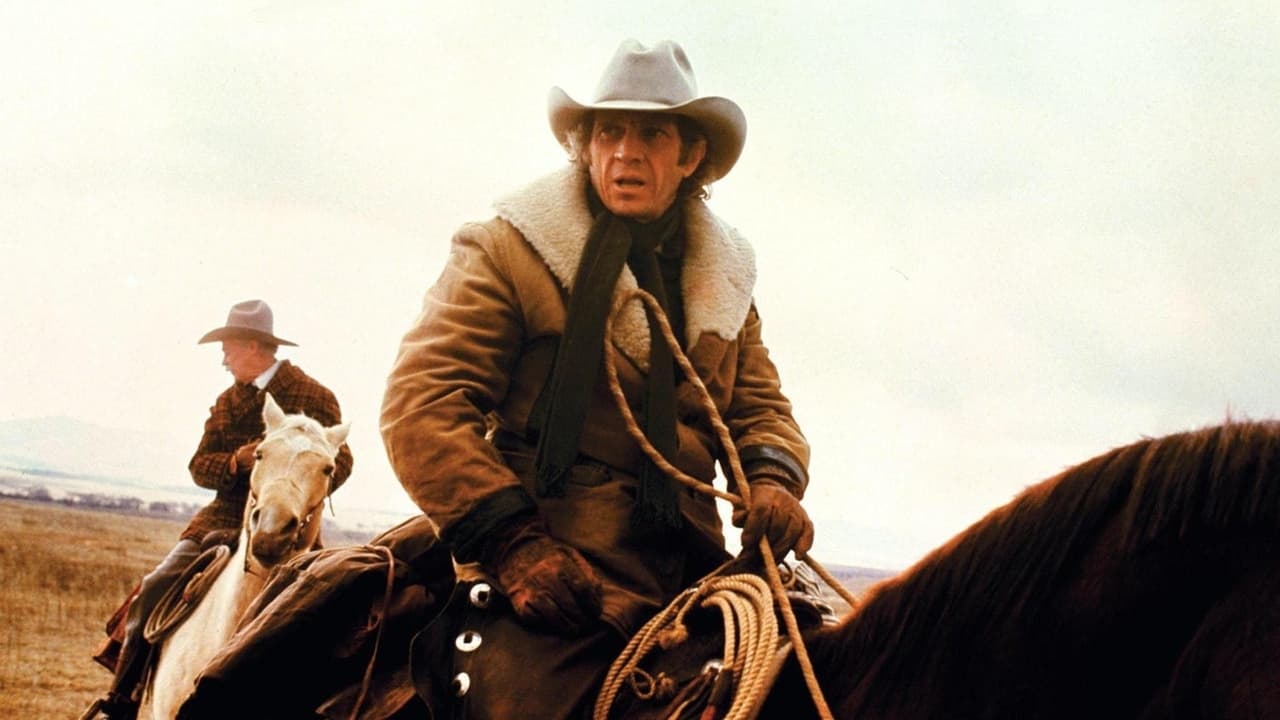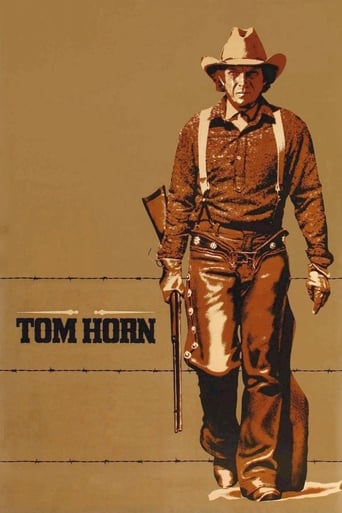

Brilliant and touching
... View MoreBest movie of this year hands down!
... View MoreIt's fun, it's light, [but] it has a hard time when its tries to get heavy.
... View MoreThe biggest problem with this movie is it’s a little better than you think it might be, which somehow makes it worse. As in, it takes itself a bit too seriously, which makes most of the movie feel kind of dull.
... View MoreThis is unfairly forgotten western from the decade were western were slowly dying until the 1985. " Tom Horn" deserves more praise , since this is a good western and one of last movies of Steve McQueen. It's his last good movie.The movie is full of brilliant dialogues. I don't remember when was the last time I have seen a movie where almost every exchange is intelligent and funny. The movie is worth watching for the dialogues alone.The story is a little predictable , but the movie is well directed by William Wiard and grips you from start to finish. I felt sad at the end and that was the whole point.The movie made me sad , because it was not only the goodbye to Tom Horn, but also to Steve McQueen ("Papillon") . Both were heroes from the past that were slowly dying in a changing world that didn't need them. McQueen did make one more movie after this one , but for me this is his good bye. A good movie and a great farewell to wonderful actor.I give it 7/10.
... View MoreMany good comments are already posted. I want to point out a few additional facts about the making of the movie that might be interesting to some. I remember reading a feature article about the making of Tom Horn in American Cinematographer or American Film or one of the other trade magazines. One technique that is very different for a major Hollywood film is that the filmmakers decided to use very little makeup on the actors in order to make the film a more realistic portrayal of life at that time. The fact that Linda Evans agreed to be photographed without makeup is a testament both to her natural beauty and her strong commitment to this film. Watch closely and you will spot many scenes where the lighting and makeup are unflattering to the actors, but the effect adds to the feel of this under-appreciated film. The costumes are also accurate for the period -- no belts (remember suspenders?), lots of wool and plenty of earth tones. In order to avoid the unpredictable weather and short summer in the location on the northern plains where the film is set, the movie was filmed in (if memory serves) Arizona. And guess what? Right in the middle of production, it snowed big-time! A quick decision had to be made whether to delay the filming or to go ahead, knowing that the snow would not last long in that climate (making continuity a problem). They decided to go for it and the shooting schedule was changed so that all outdoor snow scenes were shot over the course of a couple of days. This was a mammoth task for the crew and cast to pull off, but they managed to shoot all the outdoor scenes before the snow melted, and only had to use fake snow in a couple of street scenes. Anyway, Tom Horn was one of the first westerns to try and give a more accurate historical portrayal of the old west and that alone sets it apart from most Hollywood westerns.
... View MoreDirected by William Wiard and based on a true story, "Tom Horn" opens in 1901, in Wyoming, where McQueen meets John C. Coble (Richard Farnsworth) who offered him to ease up at his place for a while Tom accepted, but he said I'd to earn my keep Seeing Horn with great ability with a rifle, and after speaking with the Association, John asks him to eliminate the rustlers who have completely wiped out their herd profits not to mention what the buzzards and the predators have done to their cash crops But after one incident has disturbed the Association in town, and the rustling has stopped, they determined to get rid of Horn forgetting he was only doing what they hired him to do Mc Queen plays well the Indian tracker "scared to death of lobster, the man of the West "afraid to lose his freedom and not be able to get back up in those hills again." Linda Evans is appealing as the school teacher from Hawaii who saw a man of the Old West trying to live in the New Richard Farnsworth is the loyal friend John C. Coble who was quite sure that Tom never killed that kid John advices him not to try to break out of the jail He knows he can do it, but it's just admitting his guilt if he tries Billy Green Bush is the U.S. Marshal Joe Belle who asks the newspaperman to sit behind the door and write lying down what he hears real good Slims Pickens is the old Sheriff Sam Creed who arrested Tom With a legendary hero, great photography and good direction "Tom Horn" is very good Western to watch
... View MoreThis film, while not a classic, is an important and entertaining view of the dying days of the American West. Tom Horn, as portrayed by McQueen, is a legend past his prime.... misunderstood and out of place in the new century. In a number of ways, the film is similar in this respect to the films Unforgiven as well as the Grey Fox (which also featured Richard Farnsworth).My only real disappointment in the film was the short amount of screen time for Linda Evans. She was dynamic in the few scenes in which she appeared and had excellent chemistry with McQueen.This film was superior to the earlier Nevada Smith and is a must-see for fans of the genre .
... View More